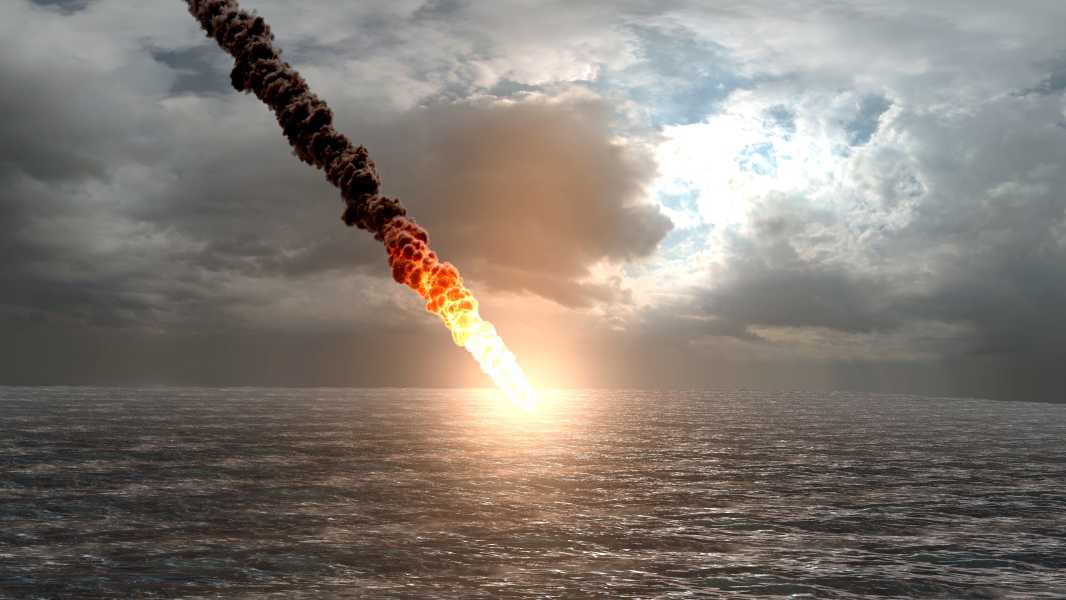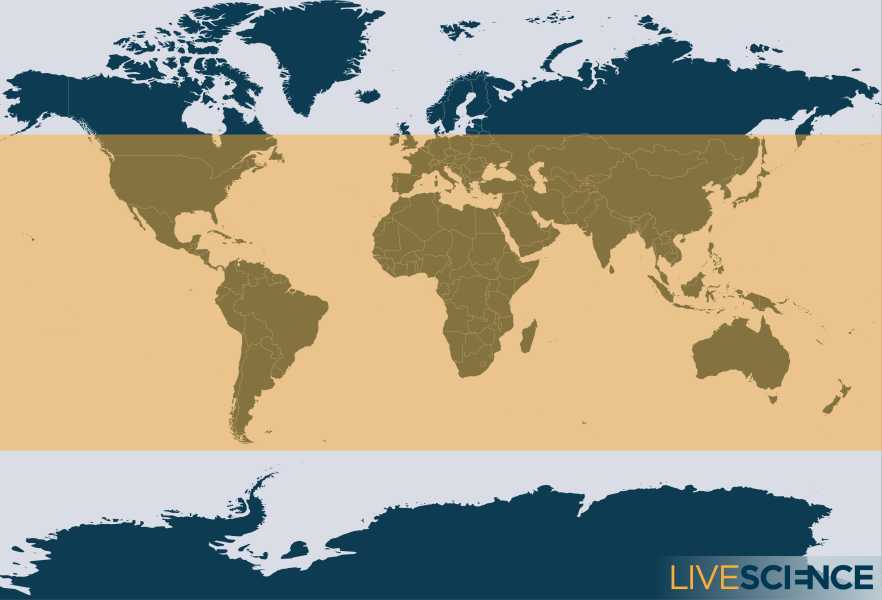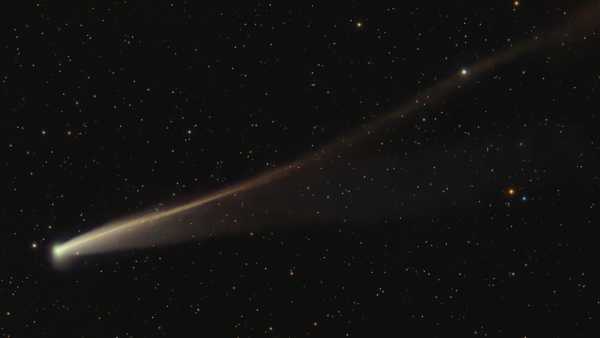
An illustration of a satellite falling into the ocean after an uncontrolled re-entry into Earth's atmosphere. A similar fate is expected to befall the Soviet probe Cosmos 482, which could fall to Earth tonight. (Image credit: Getty Images)
The ill-fated Soviet spacecraft Cosmos 482 will end its roughly 50-year journey around Earth's orbit this weekend, and experts predict it could crash back to our planet as early as tonight (May 9).
The latest forecast from the European Space Agency (ESA) is for the Kosmos 482 lander to enter Earth's atmosphere at around 02:26 a.m. ET (06:26 GMT) on Saturday, May 10. The forecast has a margin of error of plus or minus 4.35 hours, giving a re-entry window of approximately 10 p.m. Friday (May 9) to 07 a.m. Saturday, according to ESA.
Kayhan Space, a Colorado-based space technology company that is also tracking the craft, is predicting an even tighter return window. At press time, the company’s latest estimate puts the return time at 2:28 a.m. ET (6:28 a.m. GMT) on May 10, plus or minus 2.4 hours.
“The atmospheric density at low altitudes (50 to 300 km) [30 to 185 miles] is very variable, which can lead to significant uncertainty in the predictions,” Derek Woods, senior astrodynamics engineer at Kayhan Space, told Live Science in an email.
Where will Cosmos 482 land?

A map showing where the Soviet satellite Cosmos 482 could land this weekend. The orange stripe marks the entry window between 52 degrees north and 52 degrees south latitude.
Flying through the atmosphere like a meteor, the craft, which is about 3 feet (1 meter) wide and weighs 1,091 pounds (495 kilograms), could fall almost anywhere on the planet. It could land anywhere between 52 degrees north and 52 degrees south latitude — a vast swath of Earth that includes nearly all major population centers — according to the ESA.
Fortunately, the chances of the spacecraft landing in the ocean are high, as is the case with most uncontrolled reentries of space debris. Experts will not be able to narrow down the landing zone until several hours before reentry, due to the unpredictable effects of atmospheric drag.
The chance of an uncontrolled spacecraft colliding with a human is “a typical one in a few thousand chance” associated with falling space debris, he wrote
Sourse: www.livescience.com





